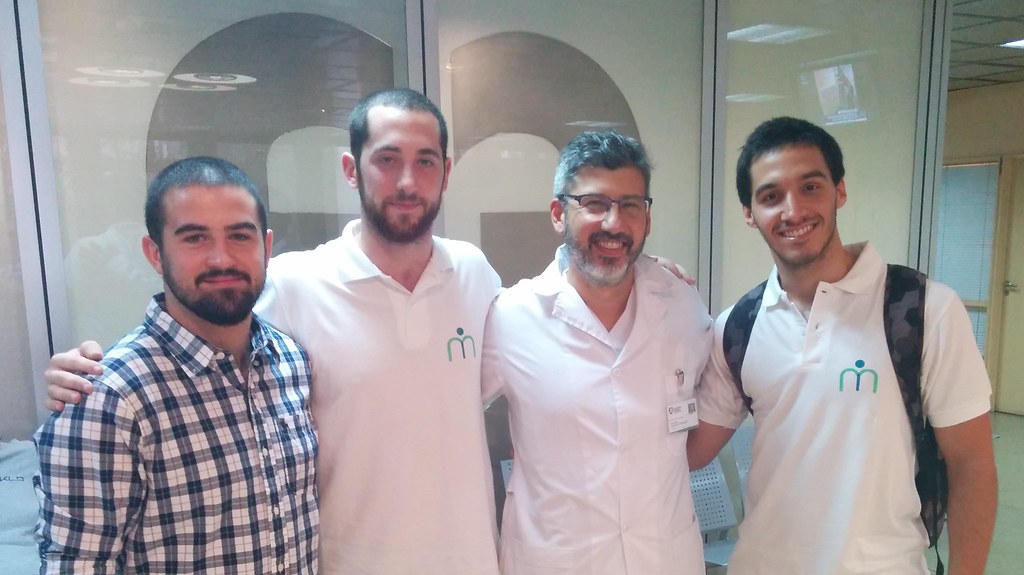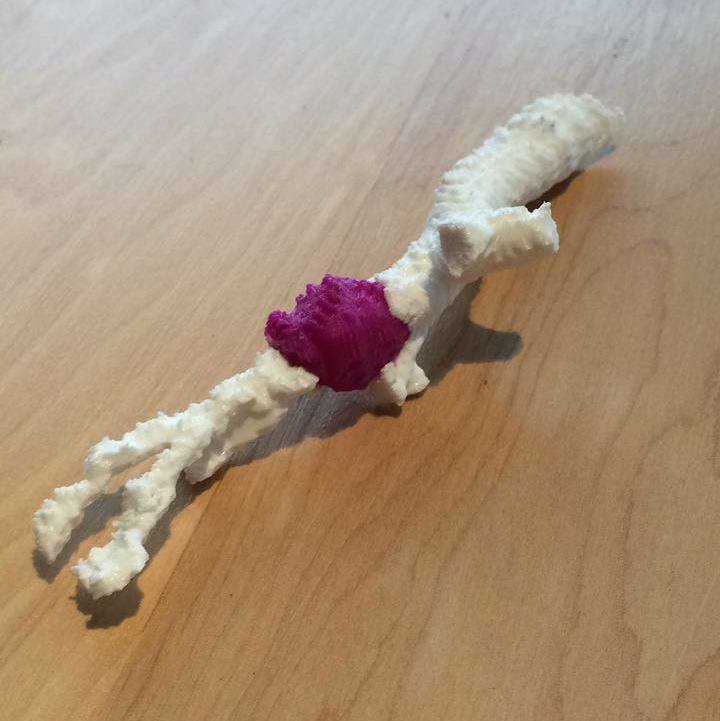Somos un equipo de trabajo de tres personas que desde 2015 viene trabajando con
impresión 3D en el campo de la medicina.
http://www.modelosmedicos.com
En 2016 decidimos convertir nuestro proyecto en un emprendimiento y fundamos
Mirai.
Además de ser grandes amigos, nos complementamos a la perfección:
Santiago Birkner De Miguel, 21 años, es estudiante de Ingeniería Biomédica en la Universidad Favaloro. Se encarga de las tareas de segmentación, diseño e impresión 3D.
Lucas Julián Mey, 23 años, es Técnico Mecatrónico del Inst. Huergo y está cursando el último año de Ingeniería Biomédica en la Universidad Favaloro. Es también becario de investigación en la universidad y se encarga de cuestiones de software y nuevos desarrollos.
Matías Ezequiel Biancucci, 23 años, soy Técnico Electromecánico de la Escuela Philips, ex estudiante de Ing. Biomédica en la Universidad Favaloro y actual estudiante de Ing. Industrial en la UTN FRBA. Trabajé en distintas empresas de tecnología médica como IngeRay SRL, VECCSA SA y Philips Argentina SA, de la cual me abrí para poder dedicarle tiempo completo a nuestro emprendimiento. Me encargo de la gestión y la parte ejecutiva.

¿Por qué impresión 3D en medicina?
La impresión 3D permite brindar soluciones médicas a medida del paciente, diseñadas específicamente para cada persona. En consecuencia, tiene el potencial de mejorar los tratamientos, sobre todo en el área quirúrgica.
En Argentina, la aplicación de esta tecnología en medicina no es habitual.
Queremos ponerla al alcance de todos y que sea algo común al momento de planificar una cirugía de alta complejidad.
Habitualmente, al introducir planificación con impresión 3D en una cirugía, se logra:
- Reducir el tiempo de la operación.
- Ahorrar dinero en insumos de quirófano.
- Realizar maniobras quirúrgicas más precisas.
- Evitar errores.
- Disminuir sangrado, probabilidad de infección y dosis de radiación.
Resultados
El 18 de Noviembre de 2016, gracias a la implementación de un biomodelo impreso en 3D, un cirujano de la Fundación Favaloro pudo extirpar un tumor bronquial salvándo la totalidad del pulmón. Sin esta tecnología, lo tradicional hubiese sido remover medio pulmón.

El 6 de Marzo de 2017, una operación similar con un tumor mucho mayor, se realizó nuevamente en la Fundación Favaloro. Por las características del caso era imposible no remover una sección del pulmón derecho, pero nuevamente la tecnología permitió resecar una porción mínima, reconstruir parte del árbol bronquial y dejar dicho pulmón funcional. Objetivos
Queremos que casos de éxito como estos se sigan repitiendo. Buscamos recaudar fondos para poder solventar gastos en equipos, insumos y financiar pruebas en nuevos centros médicos.
El financiamiento es fundamental para lograr que los cirujanos puedan conocer esta tecnología. Para nosotros tiene un costo considerable realizar cada biomodelo y las coberturas de salud públicas y/o privadas por ahora no lo cubren por ser algo nuevo para la mayoría.
Estamos convencidos de que cuando los cirujanos tengan la experiencia de operar utilizando los modelos 3D en la planificación, los querrán implementar y les permitirá mejorar la salud de miles de personas.
En caso de no recaudar el 100% de nuestro objetivo económico haremos lo siguiente:
-
Con el 10%
En caso de llegar al 10% del objetivo de recaudación: Todo el dinero irá destinado a financiar modelos para pruebas en hospitales públicos. Esto será así hasta agotar la totalidad de ese dinero.
-
Con el 25%
En caso de llegar al 25% del objetivo de recaudación: El 15% irá destinado a financiar las pruebas en hospitales públicos. El 10% restante se utilizará para realizar la ejecución del plan de inversiones correspondiente al PAC Emprendedores que nos otorgó el Ministerio de Producción de La Nación. Esto contempla la compras de dos equipos de impresión 3D y sus insumos asociados.
-
Con el 50%
En caso de llegar al 50% del objetivo de recaudación: El 20% irá destinado a financiar las pruebas en hospitales públicos. El 20% restante se utilizará para ejecutar el PAC Emprendedores. Y el 10% restante se utilizará para capacitación del equipo de trabajo en cursos y congresos.
-
Con el 75%
En caso de llegar al 75% del objetivo de recaudación: El 30% irá destinado a financiar las pruebas en hospitales públicos. El resto de los montos del objetivo anterior se respetarán. Y el 15% adicional será invertido en investigación y desarrollo. Esto contempla entre otras cosas el desarrollo de guías quirúrgicas personalizadas, software, proyectos de bioimpresión y/o implantes a medida.


